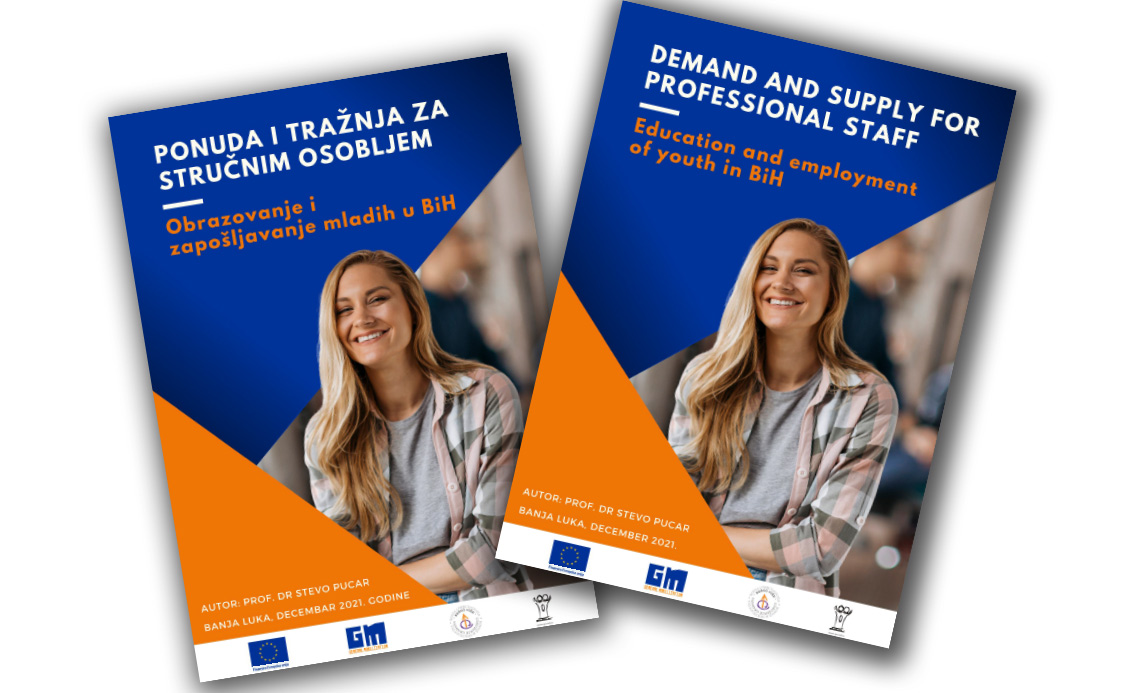U ovoj studiji prezentujemo rezultate istraživanja u okviru „Programa zadržavanja mladih u BiH – Opšta mobilizacija“, koji implementira Udruženja građana “Nešto Više“ u saradnji sa PRONI Centrom za omladinski razvoj, a finansira Evropska Unija.
Glavni cilj ovog istraživanja je analiza ponude i tražnje za stručnim osobljem, tj. potreba poslodavaca i ponude stručnih škola za srednje stručno obrazovanje, analizu nastavnog sistema i njegovu usklađenost sa vještinama potrebnim privredi. Takođe , važno je i da se donosiocima odluka u BiH pruži sažeta analiza u oblasti nezaposlenosti mladih, praćena nizom aktivnih mjera za borbu protiv nezaposlenosti mladih, kao i inputima o tome koja rešenja treba preduzeti.
Osnovna metodologija u istraživanju je analiza primarnih i sekundarnih podataka, pregled postojeće literature i dokumenata iz ove oblasti. Osnova za ovo istraživanje su bili rezultati provedenih anketnih istraživanja, standardni izvještaji statističkih institucija, ali i posebne kvantitativne i kvalitativne analize i izveštaji koji se koriste za specifične potrebe ovog istraživanja.
publikaciju pogledajte ovdje: LINK (BHS verzija)
In this study, we present the results of research within the “Youth Retention Program in BiH – General Mobilization”, implemented by the Citizens’s Association “Nešto Više” in cooperation with the PRONI Center for Youth Development, funded by the European Union.The main goal of this research is the analysis of supply and demand for professional staff, ie. the need of employers and the offer of secondary vocational schools, the analysis of the teaching system and its harmonization with the skills required by the economy. It is also important to provide decision makers in BiH with a concise analysis in the field of youth unemployment, followed by a series of active measures to combat youth unemployment, as well as inputs on what solutions should be taken.The basic methodology in the research is the analysis of primary and secondary data, review of existing literature and documents in this field. The basis for this research were the results of surveys, standard reports of institutions for statistics, but also special quantitative and qualitative analyses and reports used for the specific needs of this research.
For the publication on English click HERE

